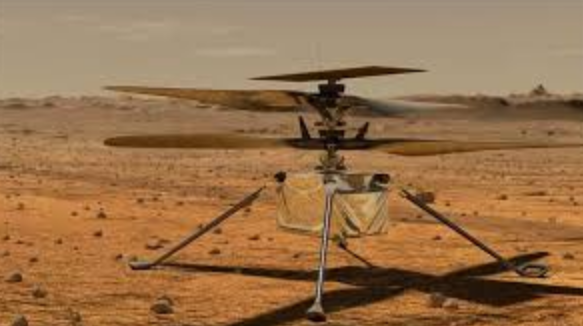The ultra-light aircraft was dropped on the surface on Saturday after detaching from the belly of the Perseverance rover, which touched down on the Red Planet on February 18.
“But we now have confirmation that we have the right insulation, the right heaters, and enough energy in its battery to survive the cold night, which is a big win for the team. We’re excited to continue to prepare Ingenuity for its first flight test.”
Over the coming days, Ingenuity will undergo tests of its rotor blades and motors.
If all goes well, Ingenuity is expected to make its first flight attempt no earlier than the evening of April 11, the Jet Propulsion Laboratory said.
It will be the first aircraft to attempt powered, controlled flight on another planet.
Ingenuity is carrying a small piece of cloth that covered one of the wings of the Wright brothers’ first aircraft which achieved the first powered flight ..
A series of flights are planned over its mission lasting 30 Martian sols (31 Earth days).
“Our 30-sol test schedule is frontloaded with exciting milestones,” said Teddy Tzanetos, Ingenuity deputy operations lead.
“Whatever the future holds, we will acquire all the flight data we can within that timeframe.”
The four-pound (1.8-kilogram) rotorcraft cost NASA around $85 million to develop and is considered a proof of concept that could revolutionize space exploration.
Future aircraft could cover ground much quicker than rovers, and explore more rugged terrain.





